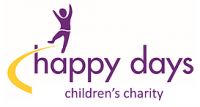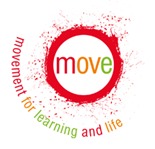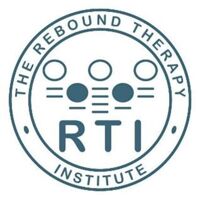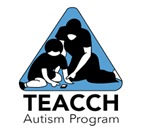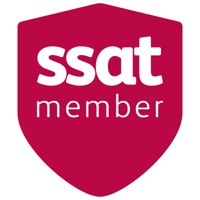- DSCF3017
Project - Funding our Hydrotherapy Pool
Hydrotherapy is a water-based treatment where warm water relaxes tight muscle groups and eases stiff joints.
Hydrotherapy is also fun and gives users the freedom of movement only experienced in the pool as well as the social interaction facilitated by close face-to-face contact.
The purpose of the pool is to offer therapy both to those pupils attending Humberston Park School and individuals within the community who have a severe physical impairment and /or a medical condition.
How can hydrotherapy improve health?
There are 9 key benefits, which are listed below:
Detoxifying – the increased heat induces sweat, the body’s usual way of eliminating toxins, it flushes out impurities through the skin, and helps cleanse the child’s body.
Loosens tight muscles – the weightlessness of the water relieves tension in the child’s limbs and supports any sore/aching muscles, easing the movement.
Encourages relaxation – reduction in blood pressure, releasing endorphins, slowing the child’s reaction to anxiety.
Increases metabolic rate – the water temperature increases the child’s metabolism encouraging a healthier/stable diet.
Increases digestion activity – the water flow of the water during therapy washes away trapped waste and stimulates bowel nerves and muscles to encourage regular bowel function.
Hydrates cells – once the skin has detoxified, the steam hydrates the skin by increasing oil production, which also provides a calming sensation.
Improves skin and muscle tone – moving whilst submerged underwater, means that more muscles are getting used at the same time than any other activity, meaning that without realising it, children are improving their skin and muscle tone.
Boosts immune system – the increased circulation and blood flow around the body allows lymph to be moved around more efficiently, helping to fight common colds and illnesses.
Improves the function of internal organs – the warmth of the water increases blood circulation, helping the internal organs function efficiently.
But when it comes to securing funding, it can also be helpful to understand what benefits are produced from hydrotherapy. So, here are some points on what makes hydrotherapy effective.
What makes hydrotherapy effective?
4 key features that make hydrotherapy an effective therapeutic method:
Buoyancy – When entering the water, the child’s body weight is carried by the water. This sensation is often referred to as feeling weightless. As the body weight is carried by the water, the child can strengthen their muscles without feeling like they are working too hard. The support of the water also aids balance and reduces pain.
Water Resistance – The water creates resistance, ensuring muscle and movement resistance, and builds strength.
Hydrostatic Pressure – The pressure on the body helps free tight muscles and lessen swelling in the hands, arms, feet, ankles, and legs.
Water Temperature – Water temperature is really important for hydrotherapy. The temperature is around 35 deg C...The warm water eases the mind, relaxes muscles, and relieves anxiety and stress to give a real feeling of tranquillity.
Why are hydrotherapy pools needed in a Special Educational Need school /community?
So, let’s look at some more specific examples relating to SEN schools. You’ll see how these benefits can be especially helpful for children with disabilities and special educational needs.
Hydrotherapy for children with Cerebral Palsy
An estimated 30,000 children in the UK have a type of Cerebral Palsy (CP).
CP is a lifelong condition caused by a problem with the brain either before, during, or very soon after a baby is born. This can be a bleed or reduced oxygen in the brain, or it could be caused by infections during pregnancy.
Cerebral Palsy can cause symptoms such as stiffness or floppiness, weak arms or legs, jerky/clumsy movements, fidgeting, and uncontrolled random movement.
Using a hydrotherapy pool can have a positive impact on these symptoms and improve everyday functional skills for a child with CP:
The increased warmth of the water encourages relaxation by affecting the individual neuro-muscular junctions. This relaxation results in decreased spasticity and muscle tone.
A symptom of CP is stiff/painful joints, so the buoyancy of the water is used to assist the movement in the joints.
For children with CP who use wheelchairs, sitting all day in their chairs can be restricting. So, the freedom of movement in the pool is welcoming. Having this time for free play and movement can also improve concentration and behaviour in the classroom.
The buoyancy alleviates fears of potential injury when trying new movements. This allows children to try things they wouldn’t attempt on land. Over time, this can really improve the range of movement for children with CP.
Another important point is that children don’t need to be able to swim to do hydrotherapy. Buoyancy aids can be used if needed. Plus, a member of staff will always be there supporting them for safety and reassurance.
Vestibular Stimulation – The vestibular system controls balance. Hydrotherapy has been shown to improve balance due to the pressure of the water on the body. This can be highly beneficial for children with ASD. Many children show repetitive behaviours, like rocking, which can be distracting in lessons and potentially dangerous. These behaviours are thought to be linked to an underdeveloped vestibular system. Being able to change positions in the water can stimulate the vestibular system, improving balance and sensory input over time. Outside the pool, this can help reduce repetitive behaviours and prevent issues like dizziness.
Proprioceptive Feedback – Often referred to as our sixth sense, proprioceptive feedback is how a person understands where they are in a certain space. This is another ability that can be underdeveloped in children with Autism. Not having this feedback can make movements clumsy or jerky. In the water, there is resistance when the child moves. This gives enhanced feedback about where their body is and boosts body awareness, whilst improving their tolerance to touch. Over time, this can help make their body movements more fluid and controlled.
General benefits for education and children’s health
Of course, SEN schools/communities have young people with a wide range of care needs. Other conditions besides Cerebral Palsy and ASD must be considered when investing in equipment.
So, to round off this guide here is an overview of more general benefits hydrotherapy can provide in SEN schools:
Hydrotherapy exercises can help children improve their:
Oral motor skills and respiratory control – By blowing bubbles, or blowing a lightweight object along the surface of the water.
Muscle strength – Activities using a water noodle can build muscle in the arms and core without it being obvious to the child.
Children with disabilities have been known to become more communicative and cooperative after just one hydrotherapy session.
The therapy can reduce overall anxiety and stress which improves concentration and confidence in all areas of schooling and everyday life.
The much needed funds are to support the costs of running the pool include chemicals, repairs and maintenance, utility bills etc. The cost for these year on year is approximately £50,000.
Do you want to join us in making a difference? I'm raising money in aid of FRIENDS OF HUMBERSTON PARK SPECIAL SCHOOL and every donation will help. Thank you in advance for your contribution to this cause that means so much to our community of users with physical disabilities.

